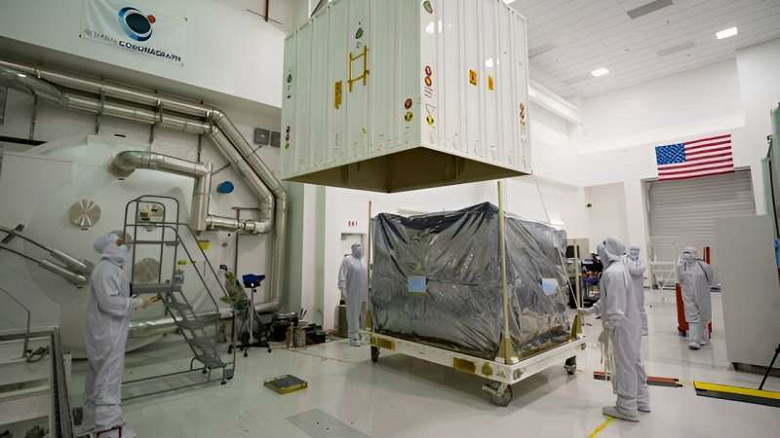The launch of the coronagraph will be an important step towards the creation of a future space telescope to search for habitable exoplanets
Coronagraph on the NASA «Nancy Grace» Space Telescope will help pave the way for the search for habitable planets beyond our solar system. The technology demonstrator recently departed NASA's Jet Propulsion Laboratory (JPL) in Southern California, where it joined the rest of the space observatory in preparation for a launch scheduled for May 2027.
Before its flight, the coronagraph underwent a full test of its ability to block starlight — a process that engineers call «cutting a dark hole». This process will allow astronomers to observe light directly from planets around other stars. Once demonstrated, similar technologies on a future mission could allow astronomers to use the data to identify chemicals in exoplanet atmospheres, including those that potentially indicate biomarkers.
During the test, the coronagraph camera shows a donut-shaped area around the observed star, which slowly darkens as the team directs more starlight away from it — hence the name of the process, — «cutting a dark hole». The exoplanet hiding in this dark region will slowly emerge as the instrument does its work using deformable moving mirrors.
More than 5,000 planets have been discovered and confirmed around other stars over the past 30 years, but most have been discovered indirectly, meaning their presence is determined based on how they appear in the light of their star. In fact, fewer than 70 exoplanets have been directly imaged, and they are typically much larger, hotter, and farther from their stars than Earth.
Developing the ability to directly image terrestrial planets will require intermediate steps, such as the coronagraph on the Nancy Grace Roman telescope. At maximum power, it could image a Jupiter-like exoplanet around a star like our Sun: a large, cool planet located close to the star's habitable zone.
What NASA engineers learn from this coronagraph will help pave the way for future missions designed to directly image Earth-sized planets orbiting the habitable zones of stars like the Sun. The concept for the future telescope, called the Habitable Worlds Observatory, aims to image at least 25 Earth-like planets with an instrument that will build on the achievements of the coronagraph. Nancy Grace».
«Active components such as deformable mirrors are needed to achieve the goals of a mission such as the "Habitable Worlds Observatory". The active nature of the Roman coronagraph allows conventional optics to be taken to the next level. It complicates the whole system, but without it we wouldn't be able to do all these incredible things», — said Ilya Poberezhskiy of the Jet Propulsion Laboratory, systems engineer for the coronagraph project.

